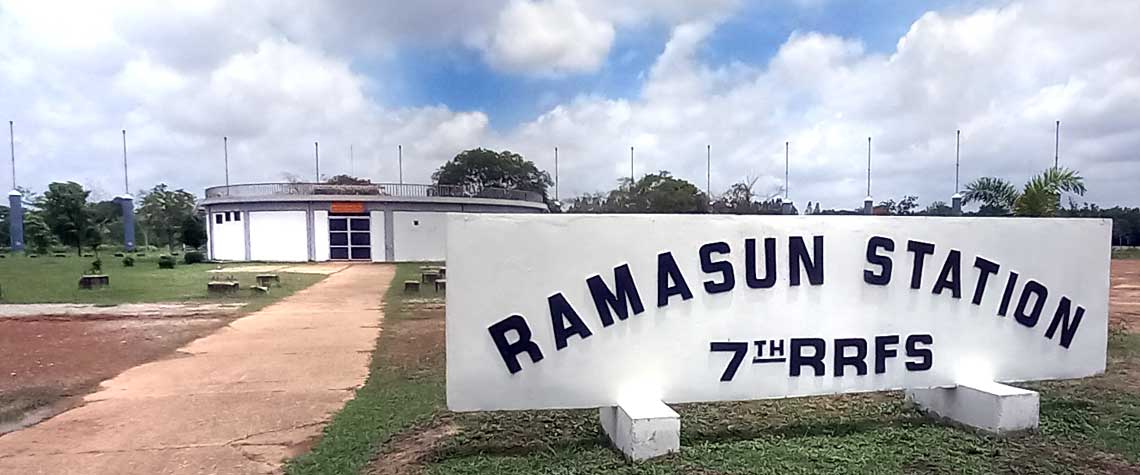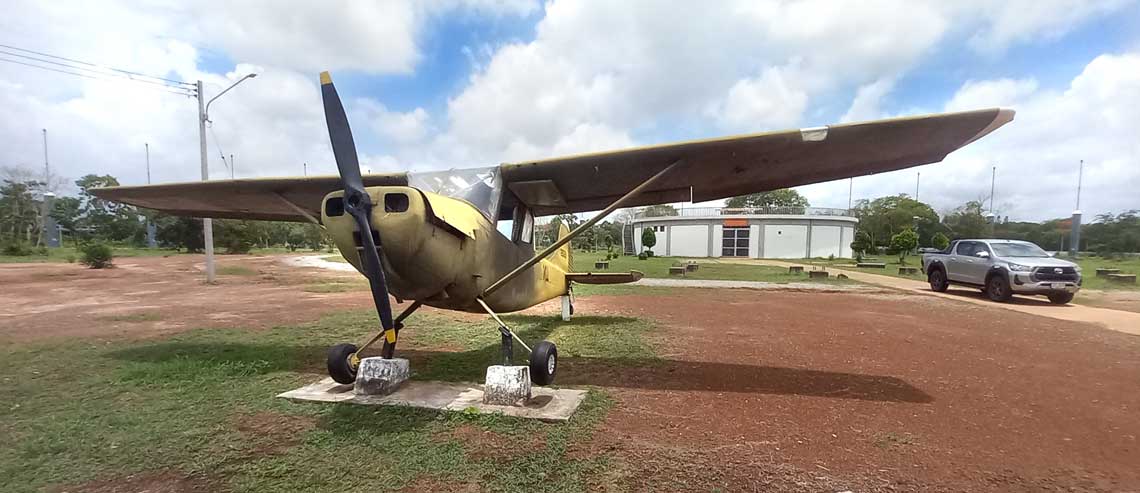Ramasun Historical Museum
Talay Bua Daeng, also known as the Red Lotus Sea in English, is the main tourist attraction in the northern province Udon Thani, but there are more things to see and do while you are staying at Bua Daeng Homestay Resort, only half an hour away is the Ramasun Historical Museum on the main highway from Udon Thani to Khon Kaen, click here to see it on Google Maps.
It is not a widely advertised tourist attraction, but an interesting off the beaten track bit of history.
During the Vietnam War this was an American Airforce base and the largest radar station in south-east Asia, it is located inside the Phraya Sunthorn Dhammathada Camp of the Royal Thai Army’s 1st Infantry Battalion, 13th Infantry Regiment, Tambon Non-Sung, Muang District, Udon Thani.
The base was off-limits to the general public for years, until local history enthusiasts convinced the regiment’s commanding officer to turn some parts of the base into a museum that has been open to the public since 2018.
The Ramasun Camp History Museum is open for tourists every day from 09.00 am to 4 pm.
For more information, please call 088-729-1174

In 1964 the US army bought 800 rai 320 acres) of land from the villagers for U$400 and they built a permanent base for American soldiers stationed in Vietnam during the war. It had a complete range of facilities for the soldiers such as accommodation, sports center, etc. Most importantly was the radar and communications station used to communicate with units in Southeast Asia, and spy on the communists.

This radar installation is the largest such facility in south-east Asia and is one of the seven places in the world with similar structures. There are total of 48 circular pillars here, called the 7th Radio Research Field Station (7th RRFS) or Ramasun station.
This radio listening station staffed for over a decade by National Security Agency (NSA), United States Army, and United States Air Force (USAF) personnel, and the presence of large numbers of Americans in this area gave the area a huge economic boost and the city of Udon Thani grew considerable during these years.
The name of the Ramasun camp was given by one of the Thai interpreters, and is named after a Thai myth. The name is from Ramasun, traditionally the Thai god of thunder, who saw Mekhala, the goddess of lightning and fell in love with her.

This museum does not get a lot of visitors so they will probably open the doors just for you when you go there.
This base was also rumoured to be a CIA "black site", a secret facility where terrorists would be held and tortured, although no evidence has ever substantiated these claims.
Although it might be hard to imagine now this facility was once like a small American town with fully air-conditioned permanent structures equipped with its own cinema, swimming pool, indoor and outdoor sporting facilities, power plant, and water supply, Ramasun Station was designed and built to be self-contained and to make American personnel feel as much at home as possible during their posting to this corner of Isaan.
In 1976, a year after the Vietnam War ended, the station was given to the Thai government which had no use for it so the camp fell in disrepair and locals scavenged anything that could be taken away until finally years later the Royal Thai Army took over whatever was left of the buildings, turning most of it into a base for the 1st battalion of the 13th Infantry Regiment.

There is not a lot of English language information in this museum, but an interesting collection of photographs and other material is on display.